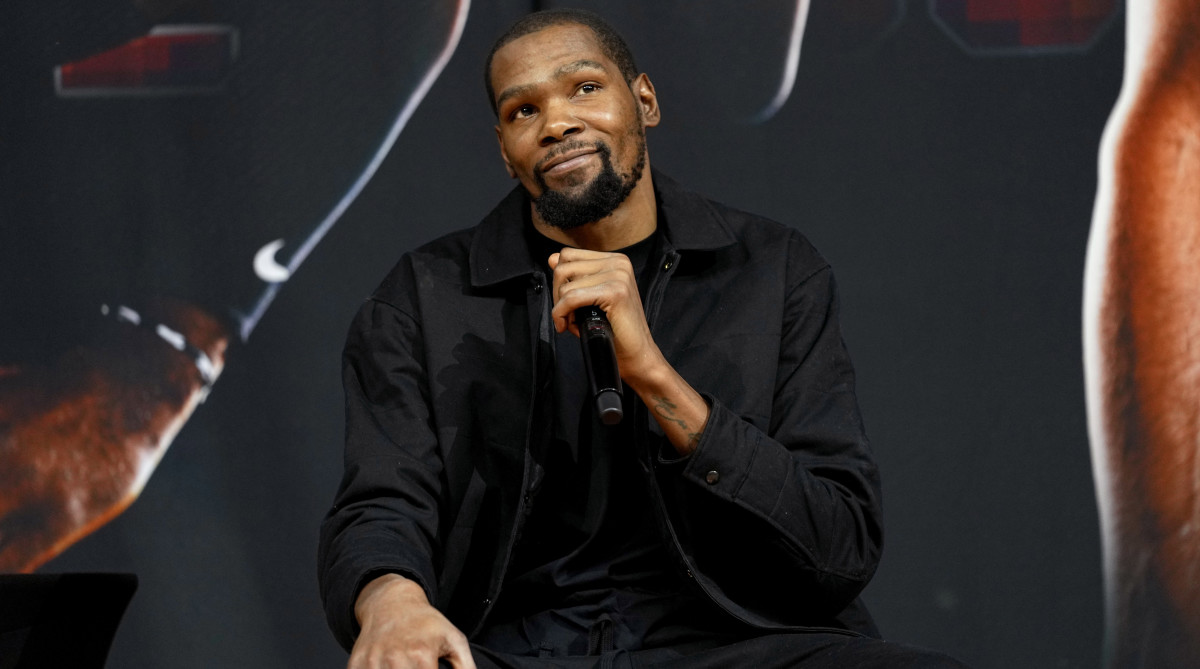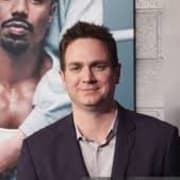The Suns’ Short Championship Window With Kevin Durant Begins Now
PHOENIX — It was a press conference. Or was it? Six hours before the Suns were scheduled to face the Clippers in the NBA’s last scheduled game before the All-Star break, Kevin Durant addressed reporters for the first time since his sudden trade to Phoenix earlier this week. Music blared from speakers. Cheerleaders tossed tee shirts into the crowd. A video montage played on the screens inside Footprint Arena after which the Suns mascot urged the thousand or so fans to cheer as Durant made his way to the floor.
This wasn’t an opportunity for the media to question Durant.
It was a chance for the Suns to introduce him.
“It’s taken a lot of hard work,” said Suns president James Jones. “But I stand here today proud and happy to introduce No. 35, for the Phoenix Suns, Kevin Durant.”
The crowd roared. Durant smiled. To his right, Matt Ishbia, the Suns’ new owner, applauded. Ishbia is the reason Durant is in Phoenix. The Suns and Nets discussed a Durant deal last summer and got nowhere. The asking price was too high. The cost, specifically luxury tax penalties, was too much. Ishbia, who formally took control of the team on Feb. 7, changed that. He waved off concerns about the tax. “We took that off the table right away,” says Ishbia. He signed off on Brooklyn’s demands, which included versatile forward Mikal Bridges.
“It wasn't a tough decision,” says Ishbia. “We really didn’t want to give up some of the guys because we love those guys. But at the end of the day, the right decision was, what do we do to maximize our team for today and for the next three to four years?”
There remains questions about Durant’s exit from Brooklyn. Thursday didn’t offer much of an opportunity for answers. Durant fielded several Suns-related questions from local media. On the growth of the Suns in recent years. “I see the culture started to change,” said Durant. On the energy in the city. “I could feel the excitement as soon as I got off the plane,” he said. On what it would mean to deliver Phoenix’s first NBA title. “I know how significant a championship is to a franchise and to a city,” said Durant. When an ESPN reporter asked Durant to sum up his time in Brooklyn, the crowd booed.
Smiling, Durant answered.
“It was a lot of ups and downs,” said Durant. “But I love to grind. And everybody in Brooklyn loved to grind too. I built a family over there. They’re going to always be a part of my journey. We didn’t accomplish what we wanted to accomplish as far as winning a championship. But I enjoyed the grind. And everybody there, we tried our hardest every day regardless of what was going on in the media, what was going on with our teammates. Everybody who was in that gym, we grinded. So I love those guys. I get emotional talking about them, because that was a special four years of my career. Coming off of an Achilles, they helped me through a lot. It was terrible how some stuff went down, but at the end of the day, I love the grind. I wish them the best going forward. They got a bright future.”
So why didn’t it work?
“We just didn’t get on the court enough,” Durant said. “I think when you [saw] James, Kyrie and myself, it was amazing basketball, for [16] games. But in order for you to win a championship and be a great team, you need more time on the floor. It’s another story about why we didn’t get on the floor together, but we just didn’t get enough time on the floor. And those are Hall of Fame players that I learned a lot from every day. I’m wishing them the best as well. It just didn’t work out.”
A few minutes later I asked Durant for his reaction to Kyrie Irving’s trade demand. And if he was disappointed that the Nets—which had won 18 of its last 20 before Durant’s knee injury in January—were not able to finish what they started.
“Yeah, I was upset that we couldn't finish,” said Durant. “I thought we [had] some good momentum. We were finally building the culture that we always wanted. I felt like every game we were building our chemistry. But I didn’t know what was going on with Kyrie and his situation with the organization, so I didn’t really focus on that. I only focused on what we were doing on the court.
“[The trade] was a blow to our team. It just took away our identity. He was a huge, huge part of what we do, his game. He’s a Hall of Fame player, a great, great player that can do everything on the floor, and we relied on that. So without him, we didn’t have a clear identity. So that was tough for me to stomach.”
“I loved playing with those guys throughout the year. I felt like we had dudes that were stepping up and doing stuff that they didn’t do on their previous teams. So I enjoyed everything about it and it was tough to not finish the season. I just tried to move forward as quickly as I could and try to figure something out for myself but also still focus on trying to rehab and get back. So it all happened so fast. But I’m glad it worked out this way.”

The crowd applauded. And why not? They got Kevin Durant. When healthy, Durant remains arguably the NBA’s most effective scorer. At 34, Durant remains at the peak of his powers. He’s averaging a shade under 30 points per game. His eFG% is above 60%. The Durant-Devin Booker duo instantly becomes one of the NBA’s most prolific scoring combinations. And the Suns have Chris Paul to blend it all together.
Still: Phoenix is taking a risk. A big risk. Durant is recovering from a knee injury and has not played more than 55 games since the 2018-19 season. Paul has his own history of injuries—often at the most inopportune times—and at 37 is showing some signs of decline. Booker missed six weeks this season with a groin injury. The Suns are a muscle pull from an early playoff exit.
Which would be a disaster. Phoenix mortgaged its future for Durant. It trade four first-round picks. And a swap. It caved and included Mikal Bridges, who scored 45 points in Brooklyn’s win over Miami on Wednesday. If you are getting some Thunder-Clippers trade vibes—when the Clips went all in to acquire the established star in Paul George and the Thunder walked away with Shai Gilgeous-Alexander—you are not alone.
There’s pressure. A lot of it. Phoenix has a short window. Two seasons. Maybe three. It has two months to work Durant into the mix this season and will enter the playoffs with at least one buyout signee (Terrence Ross) as part of the rotation. There’s no precedent for a player of Durant’s caliber being acquired midseason but history has shown that any new team needs time to come together. If this doesn’t work, a rebuild will stretch into the next decade.
On Thursday, it didn’t matter. Fans lined up hours before the press conference, standing in line between two newly-raised billboards with Durant, Booker and the rest of the new-look Suns on them. Inside they bellowed encouragement at every opportunity. “Stay healthy,” one fan yelled. “Suns in four,” shouted another.
It was a good day. There will be more of them. But there’s only one conclusion to be drawn from the Durant trade. In Phoenix, it’s championship or bust.
